The Center invites HED science researchers to deliver presentations as part of our weekly seminar series for LLNL staff, postdocs, and interns.
All presentations are the work of the speakers and owned by their respective institutions. We thank the speakers for permission to post their work here. To watch featured seminars, please visit the Livermore Lab Events YouTube channel.
If you are interested in delivering a seminar, we invite you to contact Federica Coppari, seminar series chair, at coppari1 [at] llnl.gov (coppari1[at]llnl[dot]gov)
Michael Bonitz
Kiel University, Germany
The presenter discussed hi...
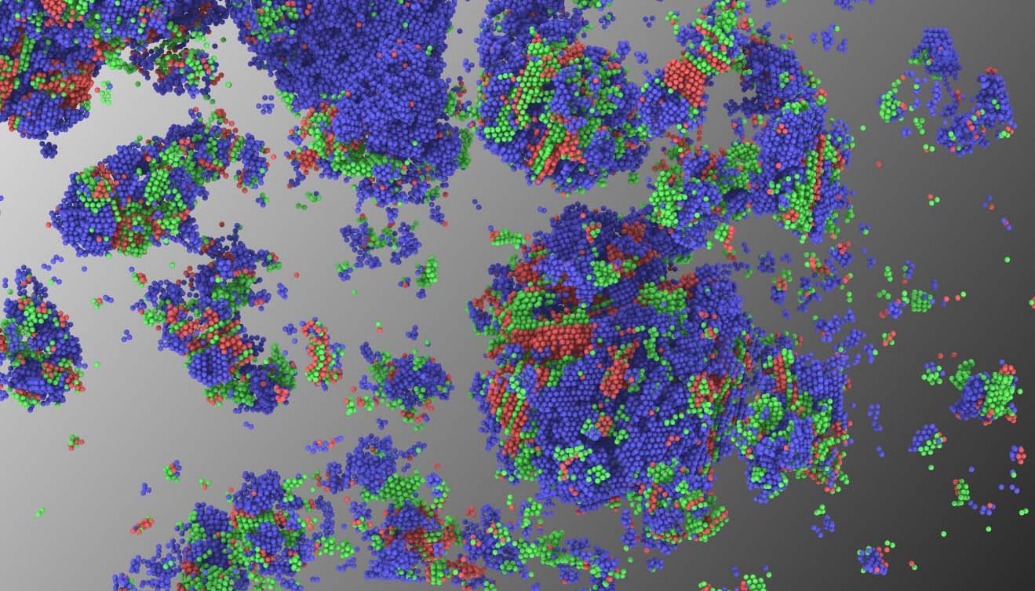
Michael Bonitz
Kiel University, Germany
The presenter discussed his team’s work regarding warm dense matter (WDM), including obtaining ab initio thermodynamic results for the electron component in WDM based on novel quantum Monte Carlo (QMC) simulations. Based on these results, the first ab initio parametrization of the exchange-correlation free energy F_xc has been presented, which is a key input for DFT simulations of WDM.
Félicie Albert
Lawrence Livermore National Laboratory
The presente...
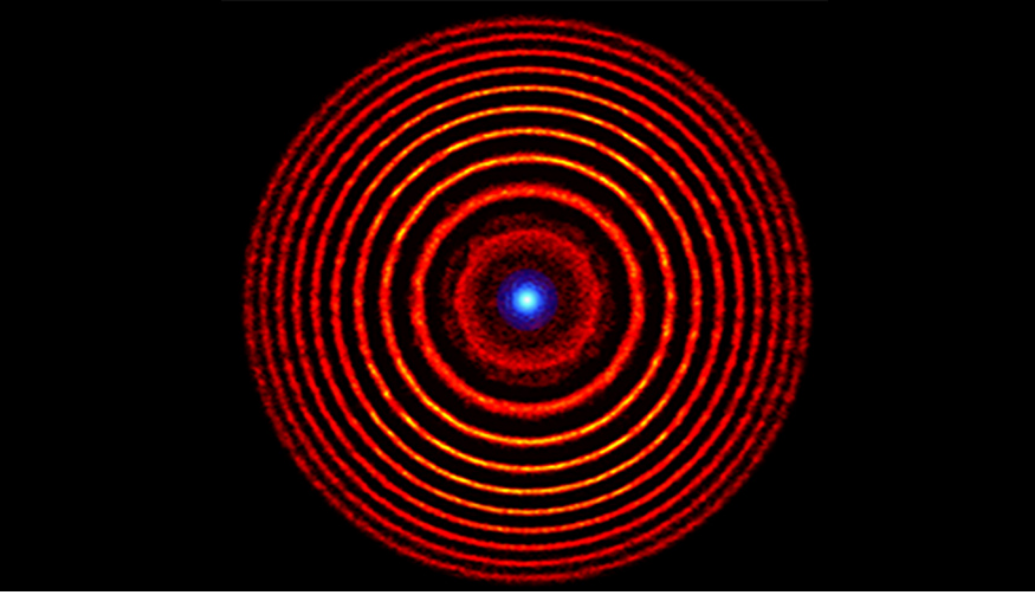
Félicie Albert
Lawrence Livermore National Laboratory
The presenter discussed particle acceleration in laser-driven plasmas as an alternative to generating x-rays via high brightness x-ray sources, such as synchrotrons and x-ray free electron lasers (XFELs). When short, intense laser pulses are focused into a gas, it produces electron plasma waves in which electrons can be trapped and accelerated, a process known as laser-wakefield acceleration (LWFA). Betatron x-ray radiation, driven by electrons from LWFA, has unique properties that are analogous to synchrotron radiation, with a 1000-fold shorter pulse. This source is produced when relativistic electrons oscillate during the LWFA process. This approach to generating x-rays via laser-plasma acceleration offers the potential to overcome some of the drawbacks of using synchrotrons and XFELs, including their size and cost.
Gianluca Gregori
University of Oxford, United Kingdom
Combining ex...

Gianluca Gregori
University of Oxford, United Kingdom
Combining experiments at Free Electron Laser Facilities with state-of-art numerical simulations provide ways to further our understanding of warm dense matter. Perhaps the most successful and ubiquitous of these approaches has been the validation of density functional theory (DFT) against experimental data. However, despite the progress made by DFT and related schemes, there remain many problems that are intractable for existing methods, particularly if the full particle dynamics is needed. The presenter discussed how alternative approaches, based on the Bohmian trajectories formalism, can be used to treat the full particle dynamics with a considerable increase in computational speed, and they compare favorably against current experimental data. He also discussed the relevance of Bohm quantum mechanics in the wider context of correlated quantum systems.
Rejean Boivin
General Atomics
The presenter discussed the DIII-D p...
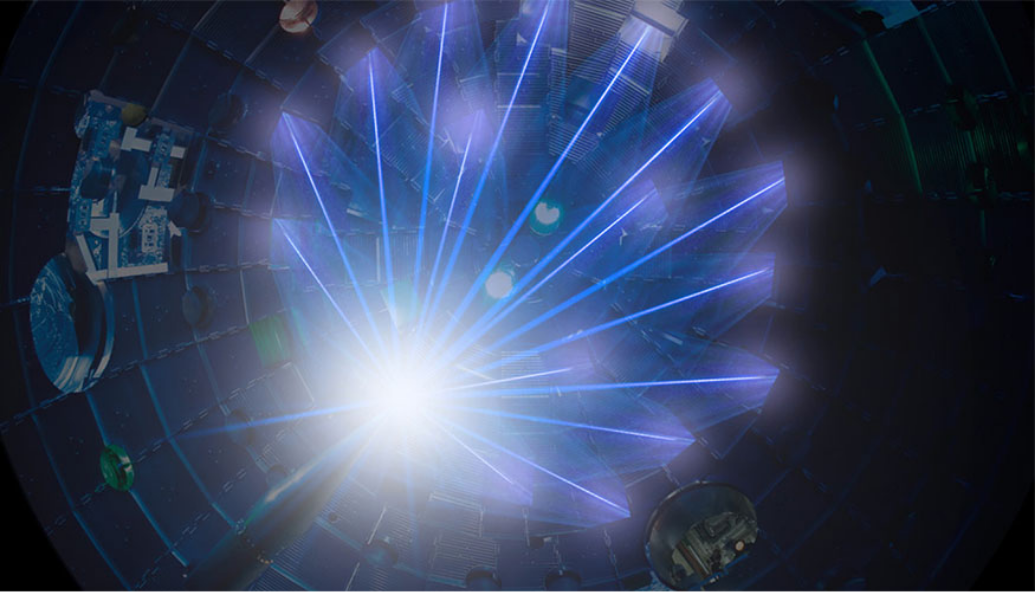
Rejean Boivin
General Atomics
The presenter discussed the DIII-D program’s latest experimental campaign, which will include new tools in support of the development of Advanced Tokamak research and the study of boundary solutions for fusion reactors. Many of these new tools aim at developing efficient mechanisms for current drive. In parallel, new diagnostics have been added and upgraded, allowing further testing of models and theories. In addition, progress has been made on the design, fabrication, and assembly of the ITER device, remaining on track for the first plasma operation scheduled for 2025-2026. Diagnostic developments have reached levels where techniques can be applied or transferred to ICF devices. The presentation included a description of imaging polarimetry, divertor viewing systems, and gamma ray imaging.
Matthew Hill
Atomic Weapons Establishment, United Kingdom
Obtainin...

Matthew Hill
Atomic Weapons Establishment, United Kingdom
Obtaining off-Hugoniot data to improve equation of state models in the warm dense matter regime remains a high priority for HED science, but generating and diagnosing matter in this state to sufficient resolution has proved challenging. A series of laser-driven proton heating experiments conducted at the AWE Orion laser facility have achieved uniform isochoric heating to 5-10 eV in solid density boron carbide, plastics, and diamond, with streaked x-ray radiography providing few-picosecond-resolution time-resolved density profiles of the subsequent isentropic expansion. Combined with ion spectra and streaked optical pyrometry, it is possible to construct model-independent isentropes from these data using a method published by M. Foord et al. and compare them to commonly used LEOS, SESAME and NuQEOS predictions. We find that at solid density all three models agree with the data to within experimental uncertainty, but at lower densities the data suggest they under-predict the pressure by as much as an order of magnitude.
Aurora Pribram-Jones
University of California, Merced
Thermal dens...

Aurora Pribram-Jones
University of California, Merced
Thermal density functional theory is common in simulations of high-temperature, high-density materials, despite the scarcity of explicitly temperature-dependent electron interaction free energy approximations and disagreement over the impact of these missing thermal effects on calculated properties. Insights from both ensemble density functional theory and the electronic strong-interaction limit can be applied to thermal ensembles, creating new approximation schemes and serving to connect these branches of formal theory with thermal density functional theory and its applications. Numerical demonstrations using the finite-temperature asymmetric Hubbard dimer and the uniform electron gas will be used to examine the advantages and disadvantages of the two approaches.
Lars Stixrude
University of California, Los Angeles
The Earth may ...

Lars Stixrude
University of California, Los Angeles
The Earth may have begun in a completely molten state, a global magma ocean, with silicate liquid extending from a dense silicate atmosphere to the boundary with the iron-rich core at a pressure of 140 GPa. Deep melt may exist in the Earth today, and the magma ocean may have left signatures of its presence. However, these signals are still uninterpretable because of a lack of basic knowledge of the behavior of fluid silicates at extreme conditions. To help answer fundamental questions, we have performed first principles quantum mechanical simulations in the range of pressure, temperature, and composition relevant to the early Earth that have not yet been explored by experiment or theory. Simulations of liquid, vapor, and supercritical forms lend new insight into the crystallization history of the magma ocean, evaporation at its surface, and the possibility of a silicate dynamo early in Earth’s history.
David Ceperley
University of Illinois, Urbana-Champaign
Hydrogen a...

David Ceperley
University of Illinois, Urbana-Champaign
Hydrogen accounts for much of the visible mass in the universe. Even though hydrogen is the first element in the periodic table, calculating its properties is not simple since both the electronic and protonic correlations are quantum and correlated. It has long been an open question how hydrogen makes a transition from a molecular insulating state to an atomic metallic state. We use a quantum Monte Carlo method (Coupled Electron Ion Monte Carlo) where we start with the true interaction between the electrons and protons and treat both fully quantum mechanically. With this method we have studied molecular dissociation in liquid hydrogen and have observed clear evidence of a liquid-liquid phase transition. During the past few years, several experiments have reported observations of the transition we predicted.
Douglass Schumacher
Ohio State University
The Scarlet Laser Facili...
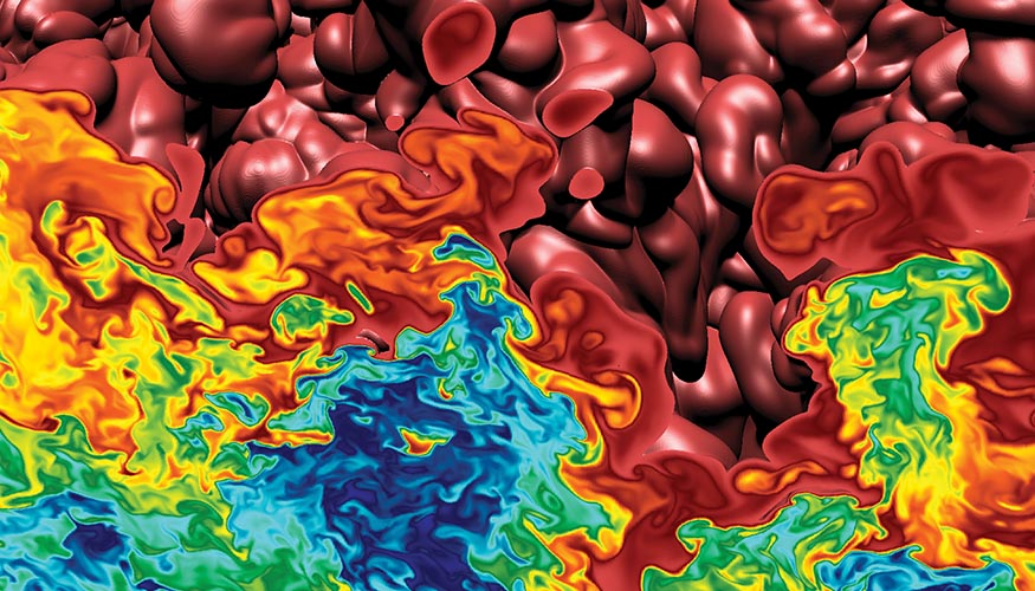
Douglass Schumacher
Ohio State University
The Scarlet Laser Facility, built with support from the U.S. Department of Energy, is a 300 TW system delivering pulses up to 10 J in energy with durations as short as 30 fs. It is used to study the intense laser matter interaction from the damage threshold up to the creation of highly relativistic plasmas. The presenter described his recent work on structured targets that enhance the laser-plasma interaction, the mechanisms of laser-based ion acceleration, and plasma mirror physics. In addition, he discussed a new technology based on liquid crystals that rapidly forms films as thin as 20 nm for targets and plasma mirrors for high repetition rate, petawatt class lasers. In addition to showing particle-in-cell simulation (PIC) results in support of this work, he described a new approach to PIC modeling that incorporates atomic pair-potentials into the PIC cycle. His research team is using this code to study laser damage and hope to extend it to a more general study of warm dense matter.
Luc Peterson
Lawrence Livermore National Laboratory
Advancements i...

Luc Peterson
Lawrence Livermore National Laboratory
Advancements in artificial intelligence technology are impacting scientific research in fields as diverse as drug discovery and fluid turbulence. Research in inertial confinement fusion (ICF) could also benefit from these technological advances. However, the challenges of ICF place some burdens on the immediate applicability of artificial intelligence. During this talk, the presenter discussed some of those challenges, such as data scarcity and the interdependence on computational modeling. In addition, the discussion explored how we are working to overcome these challenges to accelerate progress towards ignition.
Suxing Hu
University of Rochester
First-principles methods for qua...

Suxing Hu
University of Rochester
First-principles methods for quantum many-body systems, such as path-integral Monte Carlo (PIMC) and density functional theory (DFT) can provide a self-consistent way to predict material properties with the possibility of systematic improvement of their calculation accuracy. In particular, thermal DFT has revolutionized simulation and understanding of high-energy-density (HED) physics and chemistry over the past two decades. DFT-based quantum molecular-dynamics (QMD) has helped generate accurate predictions of static, transport, and optical properties of materials under HED conditions. In recent years, time-dependent DFT started to play a crucial role in studying dynamic and transport physics in HED plasmas. In this talk, the presenter discussed (1) the HED physics we have learned from PIMC and DFT-based QMD calculations; (2) how these first-principles results impact on our understanding of inertial-confinement fusion implosions and HED experiments in general; and (3) what challenges we are facing to further improve physics predictions of DFT for HED plasmas.
Walter Johnson
Notre Dame University
Standard measures of opacity,...

Walter Johnson
Notre Dame University
Standard measures of opacity, the imaginary-part of the atomic scattering factor, f2, and the mass attenuation coefficient are evaluated in shock-heated boron, boron carbide, and boron nitride plasmas. The Hugoniot equation, relating the temperature behind a shock wave to the compression ratio across the shock front, is used in connection with the plasma equation of state to determine the pressure, effective plasma charge Z, and the K-shell occupation in terms of the compression ratio. Solutions of the Hugoniot equation reveal that the K-shell occupation in low-Z ions decreases rapidly from 2 to 0 as the temperature increases from 20eV to 500eV; a temperature range in which the shock compression ratio is near 4. The average-atom model is used to determine K-shell and continuum wave functions and the photoionization cross section for x-rays in the energy range from 1 to 10 keV, where the opacity is dominated by the atomic photoionization process. For an uncompressed boron plasma at 10 eV, where the K-shell is filled, the average-atom cross section, the atomic scattering factor and the mass attenuation coefficient are all shown to agree closely with previous (cold matter) tabulations. For shock-compressed plasmas, the opacity is found to be well approximated by scaling the cold-matter values by the relative K-shell occupation; however, there is a small correction to this rule caused by the energy dependence of the photoionization cross section. Attenuation coefficients, for a 9 keV x ray are illustrated as functions of temperature along the Hugoniot for B, B4C, and BN plasmas.
Genia Vogman
Lawrence Livermore National Laboratory
Pulsed-power e...

Genia Vogman
Lawrence Livermore National Laboratory
Pulsed-power experiments run mega-amps of current through a load to produce and study high-energy-density matter. Experimental results show that the formation of low-density plasmas in the power feeds gives rise to parasitic currents, which affect load dynamics and prevent scaling of load parameters. To understand the inimical transport properties of these low-density, magnetized, collisionless plasmas and how they affect experimental outcomes, the environment within the power feeds is studied using high-order time-dependent continuum kinetic simulations, which offer enhanced solution accuracy and can robustly capture equilibria. The effects of drifts, anisotropies, finite Larmor motion, and sheared flow instabilities are examined. The computational study is facilitated in part through the development of machinery for constructing self-consistent kinetic equilibria and through the generalization of existing fluid theory analysis.
Alex Zylstra
Lawrence Livermore National Laboratory
As an energeti...

Alex Zylstra
Lawrence Livermore National Laboratory
As an energetic charged particle moves through plasma, it loses energy to the background electrons and ions; the rate of energy loss dE/dx is known as the stopping power. Sufficiently accurate stopping power models are required to model charged-particle transport in systems of interest, such as in ICF hot-spot ignition and burn propagation into the dense fuel where the DT as provide self-heating, or for secondary/tertiary neutron production in the ICF dense fuel. Calculating the stopping power in these regimes is a theoretical challenge, especially near the maximum in dE/dx (the ‘Bragg peak’) or in degenerate/strongly-coupled plasmas. In the past several years a few benchmark experiments have begun to provide direct measurements of dE/dx in ICF-relevant plasmas for the first time. This talk provided an overview of the results compared to several models.
Lorin Benedict
Lawrence Livermore National Laboratory
Proper inter...

Lorin Benedict
Lawrence Livermore National Laboratory
Proper interpretations of high-energy density experiments require the knowledge of the energy of states (EOS) of the constituent materials. When very detailed information is desired from such an experiment, the EOS models must be correspondingly detailed. This seminar will walk through a particular example of current interest—the experimental determination of the multi-Mbar melt curve of iron—and discuss how we are attempting to build a limited-range multiphase Fe EOS to aid in the estimation of the temperature in ongoing shock-ramp experiments. This step-by-step walkthrough of the experimental construction will convey both the fun and the frustration of building an EOS model from disparate sources of experimental data and ab initio predictions.
Jonathan Belof
Lawrence Livermore National Laboratory
This seminar...
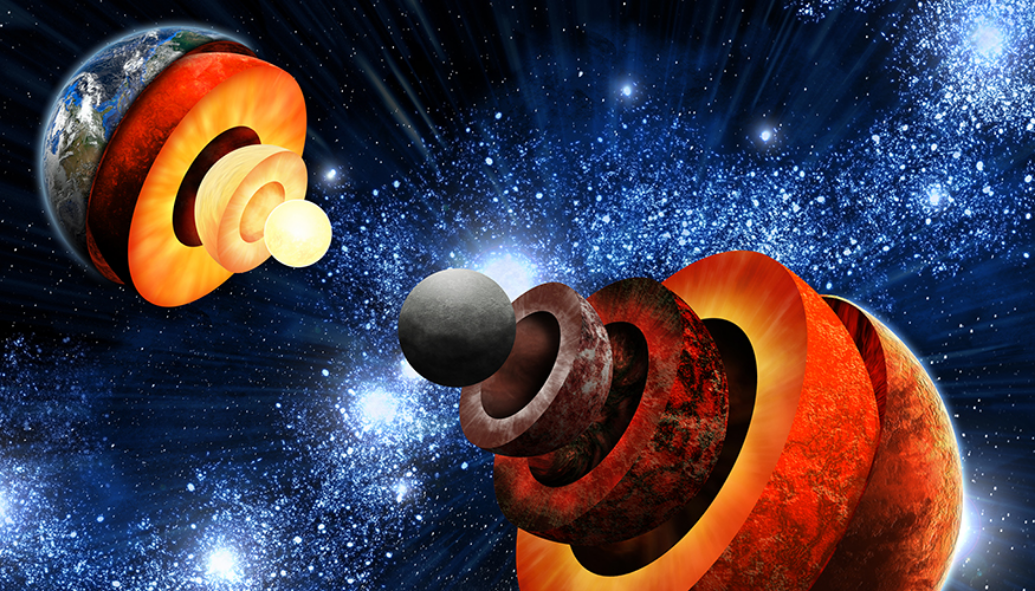
Jonathan Belof
Lawrence Livermore National Laboratory
This seminar discusses a recently developed physics-based solidification model for extreme conditions that can successfully resolve the experimental discrepancies regarding the solidification of water into the high-pressure ice VII phase. Experiments using dynamic diamond anvil cell, pulsed-power, and gas-gun platforms have presented contradictory results regarding nucleation of ice far from equilibrium. The model discussed was constructed with a focus on the role of symmetry, mass, and thermal transport at the liquid/ice interface and requires the inclusion of new aspects unique to the non-equilibrium state. The model also makes new predictions and suggests possible future experiments that have the potential to settle important questions governing the fundamental principles of nucleation far from equilibrium.
Taisuke Nagayama
Sandia National Laboratories
This seminar discuss...
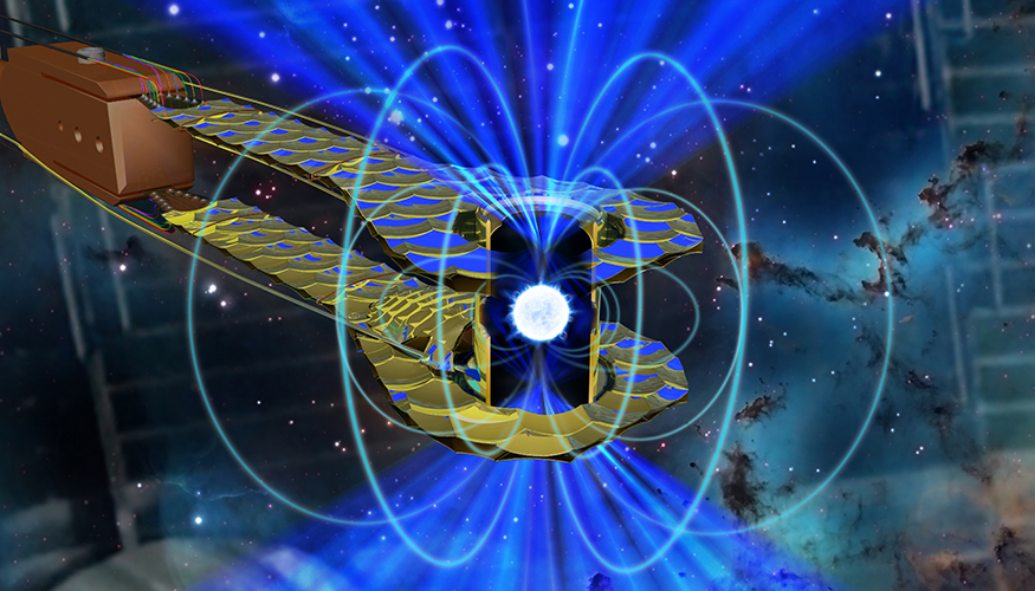
Taisuke Nagayama
Sandia National Laboratories
This seminar discusses a new analysis of opacity at differing temperatures and densities of chromium, iron, and nickel and the implications of the results on the discrepancy between model predictions of iron opacity versus the measurements of opacity at matter conditions similar to the boundary between solar radiation and convection zones. Calculated iron opacities have shown narrower spectral lines, weaker quasi-continuum at short wavelength, and deeper opacity windows than measurements. The collection of measured opacities in the study discussed provides constraints on hypotheses to explain the discrepancy.
Ivan Oleynik
University of South Florida
This seminar discusses th...

Ivan Oleynik
University of South Florida
This seminar discusses the recent progress in predictive atomic-scale simulations of materials dynamically compressed by shock waves. Extending the time and length scales of shock wave molecular dynamics simulations and developing high-fidelity interatomic potentials specially designed for simulations of extreme conditions has revealed several new phenomena: single two-zone elastic-plastic shock wave, observation of orientation-dependent solid-liquid phase transition pathways towards orientation-independent final equilibrium states, and novel polymorphic phase transitions in shock-compressed diamond. Further discussion covers the challenges and opportunities in predictive simulations of dynamical compression of materials and the dynamic interplay between theory and experiment.
Frank Graziani
Lawrence Livermore National Laboratory
The High Ene...

Frank Graziani
Lawrence Livermore National Laboratory
The High Energy Density Science Center was established in late 2015 through a joint agreement between the Physical and Life Sciences, Weapons and Complex Integration, and NIF and Photon Science Directorates. The goal of the Center is to build a high energy density community by supporting and collaborating with academic partners and integrating those efforts into the programs at LLNL. The Center is built around four focus areas: education, workshops and seminars, workforce pipeline to the programs, and enabling research collaborations between LLNL and academic partners. This seminar presents the current activities of the Center, including on-going collaborations with UCSD and UC Berkeley; new interactions with Florida A&M University, Osaka University, and Michigan State University; the present and future of the education program; the sabbatical program; interactions with the programs; and outreach opportunities to universities.
Alfredo A. Correa
Lawrence Livermore National Laboratory
This semi...

Alfredo A. Correa
Lawrence Livermore National Laboratory
This seminar presents simulation results regarding matter undergoing particle radiation, electron-ion thermalization, and non-linear electron conductivity. These effects remain fundamental in understanding the non-adiabatic ion-electron interaction in real materials. We employed real-time time-dependent density functional dynamics to obtain electronic stopping at low velocity for protons, alpha and heavier ions in metals and insulators, to describe phenomena that involve non-linear response and band-structure effects as well as variable ionization states. By studying the limit of low velocity limit from first principles, we propose a model that connects the stopping power and the electron-phonon regime under a single framework.
Yingwei Fei
Carnegie Institution for Science
This semina...

Yingwei Fei
Carnegie Institution for Science
This seminar discusses an integrated approach to experimentally constrain light elements in the Earth's core, such as carbon, oxygen, silicone, and sulfur, from element partitioning data, measurements of density, and measurements of sound velocity of core materials under extreme conditions by static and dynamic methods. Comparison of the seismically derived core density profile with the measured density of pure iron indicates some amounts of light elements in the core; their presence must reflect the conditions of the accretion process and silicate-metal equilibrium separation. The integrated approach presented yields a more complete understanding of the chemistry and physics of the Earth's core.
Troy Carter
University of California, Los Angeles
This seminar pro...

Troy Carter
University of California, Los Angeles
This seminar provides an overview of the research performed at the BaPSF and a discussion of recent experiments studying the modification of pressure-gradient-driven turbulence and transport by controlling cross-field flow and flow shear. These experiments were conducted in the BaPSF centerpiece, the Large Plasma Device, a 20-meter in length magnetized liner plasma device. This device has been used to study numerous fundamental processes, including collisionless shocks, dispersion and damping of kinetic and inertial Alfvén waves, flux ropes and magnetic reconnection, three-wave interactions, and parametric instabilities of Alfvén waves, turbulence and transport, and interactions of energetic ions and electrons with plasma waves.
Grigory Kagan
Los Alamos National Laboratory
This seminar discusse...

Grigory Kagan
Los Alamos National Laboratory
This seminar discusses the first study of x-ray emissions from a spherical implosion "hot-spot" with specific kinetic modifications to the electron distribution diagnostic. The current consensus is that successful diagnostic should operate with photon energies hw greater than 15 keV. Two main approaches are considered based on measuring line emission from a high-Z dopant such as krypton or the spectral continuum of 15 keV<hw<30keV from electrons scattering off the deuterium and tritium ions. However, both types of hard x-ray emissions are due to suprathermal free electrons, with a mean-free-path much larger than that of thermal electrons and a distribution that deviates from the Maxwellian, even if the bulk plasma is close to equilibrium. The study presented demonstrates new features in the emission spectrum brought about by these modifications and shows that inferring the electron temperature as if the emitting electrons are Maxwellian gives a lower value than the actual.
Martin Richardson
University of Central Florida
This seminar provi...

Martin Richardson
University of Central Florida
This seminar provides a review of technological progress in the field of high-energy lasers with a historical perspective and discussion on some of the challenges for transition to fully deployed defense systems. Discussion covers laser development at UCF, advanced fiber laser concepts for both Yb and Tm doped lasers operating at 1mm and 2mm respectively, limits to single-channel single-mode kW operation with with Yb fiber lasers and relevance to Tm fiber lasers, prospects for >100 kW range laser development, and new paths for laser defense applications using high-intensity ultrafast lasers in the filamentation regime.
Mari Gatu-Johnson
Massachusetts Institute of Technology
This semin...

Mari Gatu-Johnson
Massachusetts Institute of Technology
This seminar discusses the experimental design, results, and implications of recent HED experiments studying the T+T reaction and the mirror 3He+3He reaction. HED plasmas closely mimic astrophysical environments and are an excellent complement to accelerator experiments studying thermonuclear reaction rates and nuclear processes. The experiments discussed provide the first conclusive evidence of a variant TT-neutron spectrum in a center-of-mass energy spectrum between 16 and 50 keV as well as implications that the underlying physics changes with the center-of-mass energy. Future directions for exploring light-ion reactions are also discussed.
Abby Kavner
University of California Los Angeles
The tendency of e...

Abby Kavner
University of California Los Angeles
The tendency of elements to be incorporated into an iron-rich planetary core instead of oxidizing and mixing with the mantle and/or crust is determined in part by their relative abilities to oxidize or reduce at pressures and temperatures of planetary interiors. In addition to the oxidation/reduction reactions, in the presence of abundant carbon, carbonation/decarbonation reactions can also occur. This seminar presents research that begins to stake out an electrochemical series relevant for the high pressures and temperatures of planetary interiors, quantifying the tendency of major elements to either oxidize or carbonate during the planetary formation process instead of being incorporated into an iron-rich planetary core.
Sabine Stanley
Johns Hopkins University
This seminar provides an o...

Sabine Stanley
Johns Hopkins University
This seminar provides an overview of planetary dynamos and a deep discussion on the numerical dynamo modeling of and possible explanations for the multi-polar surface radial magnetic fields of Uranus and Neptune. The effects of a superionic water phase and application of scaling laws that include convective shell thickness are discussed as results of 175 dynamo simulations using mMoSST. Further discussion includes implications for exoplanets and future simulations modeling superionic water layers and additional interior structures.
Carolyn Kuranz
University of Michigan
This seminar provides an ove...

Carolyn Kuranz
University of Michigan
This seminar provides an overview of the experimental HED hydrodynamics program at the University of Michigan and recent experiments showing mode-coupling in Richtmyer-Meshkov experiments, suppression of Kelvin-Helmholtz growth due to compressible effects, the ablative stabilization of the Rayleigh-Taylor instability, and the use of x-ray radiography to create 2D images of instability growth to observe the evolution of these processes. Further discussion involves the consequences of hydrodynamic instabilities in HED systems and the ability to use high-energy lasers to drive these phenomena.
Alec Thomas
University of Michigan
This seminar provides a review ...

Alec Thomas
University of Michigan
This seminar provides a review of recent experiments in laser wakefield acceleration and energetic photon generation using the laser systems HERCULES and Lambda-cubed at the University of Michigan and the Gemini laser at the Rutherford Appleton Laboratory and discusses the future potential of the technology. Recent progress in laser wakefield acceleration has led to the emergence of new electron and x ray sources that may have benefits for ultrafast science and imaging applications. Laser wakefield acceleration provides radiation pulses with ultrashort duration and intrinsic synchronisation with the laser source, allowing for pump-probe measurements with good temporal resolution. These pulses can be used to study ultrafast dynamical phenomena in plasma and dense material, such as transient magnetic fields, rapidly evolving plasma dynamics, and crystal lattice oscillations.
Stephanie Hansen
Sandia National Laboratories
The extreme densitie...

Stephanie Hansen
Sandia National Laboratories
The extreme densities and temperatures accessible in modern experimental facilities alter the electronic and ionic structure of materials, leading to changes in state and transport properties that affect simulations and the interpretation of experimental data. This seminar describes ongoing efforts to generate a comprehensive set of consistent state and transport data from a single atomic model whose electrons and ions respond self-consistently to changes in local material conditions. This approach ensures that equations of state, transport properties (thermal and electrical conductivities, opacities, stopping powers), and diagnostic signatures (X-ray Thomson scattering, spectroscopic shifts and broadening) are mutually consistent. Such consistency can help to constrain simulations and may improve the reliability of data interpretation from complex experiments.
Don Winget
University of Texas at Austin
This seminar discusses th...

Don Winget
University of Texas at Austin
This seminar discusses the "at-parameter" experiments at the Wootton center that recreate the plasma conditions found in astronomical objects, thereby extending the reach of astronomy from the purely observational to the experimental. Current experiments investigate the weaknesses in stellar opacities, the unknown atomic physics of black hole accretion disks, and the uncertainties in line-broadening models for white dwarf stars. An in-depth discussion is presented on the latter with a discussion of the impact of these experimental capabilities on astronomical study.
Andrew Baczewski
Sandia National Laboratories
An increasingly popu...

Andrew Baczewski
Sandia National Laboratories
An increasingly popular application of electronic structure theory is the parameterization of material models used in laboratory astrophysics, inertial confinement fusion, and planetary science. However, transport properties that are also vital to these applications have received somewhat less attention as a target for development. This seminar discusses the important opportunities available to test theory and code against observables beyond thermochemistry, with particular focus on recent experimental results from Sandia laboratory that probe transport properties in the warm dense regime using the time-dependent density functional theory in describing X-ray Thomson Scattering experiments.





